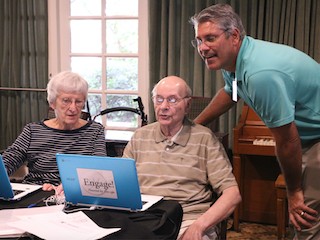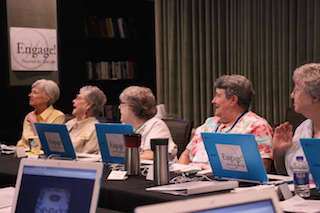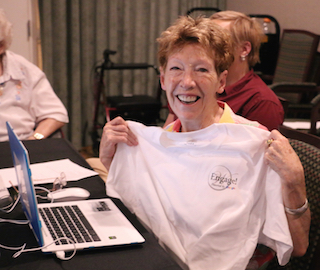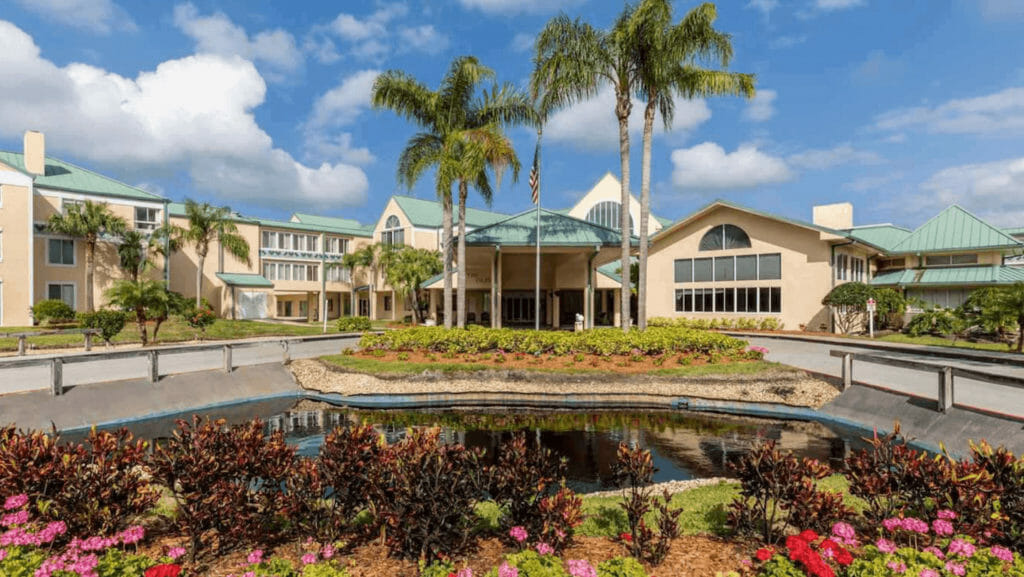
Bernie is instant messaging with grandchildren with whom he previously could not communicate. Gloria surprised her daughter — and herself — by initiating a video chat that brought them both to tears. Ms. Edwards confused her son in China by sending him an email; he called to make sure it wasn’t a hoax.
All three residents at The Fountains at La Cholla senior living community in Tucson, AZ, are participating in a pioneering program that has enabled them to learn new skills, strengthen bonds with family members and connect with staff members and fellow residents in new ways.
In its first collaboration with the senior living industry, Google has teamed up with The Fountains to create the Engage! Powered by Google program, which parent Watermark Retirement Communities ultimately hopes to roll out to its 36 other communities as well. Residents attend weekly workshops to learn how to browse the internet, send emails, use apps for their hobbies and video chat using Google Hangouts.
Jack Herklotz, Watermark’s director of information technology, got the idea for the program from his wife, a special education teacher who had attended a Google seminar and received a grant to use Google Chromebook computers in the classroom.
“I ‘Googled’ Google for Seniors and there was no such thing,” he told McKnight’s Senior Living, “so I reached out to the person who had run my wife’s class.” One thing led to another, and Engage! was born.
“I’ve seen other programs that kind of toss a computer on a desk and then the residents are supposed to like it,” Herklotz said. “I wanted to learn from them what they wanted to be taught and then teach it in a way that they would want to be taught.”
That’s what happened in the pilot phase of the program, which took place over eight weeks in July and August. Google trained two coaches (staff members), other employees and 14 residents, ranging in age from 76 to 98 years, on the company’s systems and provided guides to the company’s technical resources.
Herklotz learned that residents wanted a manual to supplement Google’s online written information and videos. “They wanted to have a book, and so we’re creating a manual of things that we’re doing in class and their homework as well as a glossary of terms,” he said, adding that residents want to understand instant messaging, WiFi, Bluetooth and other concepts “so they don’t feel out of touch.”
Herklotz said he enjoyed the in-depth time he got to spend with residents as part of the class. “They’re very intelligent people with varied backgrounds,” he said. “It’s fascinating to be in class and to realize I’m with a chemist and three professors and people who have owned their own businesses. They have all these experiences that I ordinarily wouldn’t be able to interface with and have a chat, so that alone is great. Then, to take those folks and teach them a skill that can open up the world to them? That’s really gratifying.”
 Fran Donnellan (far left in accompanying photo), the executive director of The Fountains, said that employees who served as coaches during the pilot enjoyed the experience, too. “They’re in their 20s,” she said, elaborating that one employee was from housekeeping and the other from security. “It’s been a very beautiful relationship for them to work with the residents and coach them through the technology. The associates have grown, and so have the residents.”
Fran Donnellan (far left in accompanying photo), the executive director of The Fountains, said that employees who served as coaches during the pilot enjoyed the experience, too. “They’re in their 20s,” she said, elaborating that one employee was from housekeeping and the other from security. “It’s been a very beautiful relationship for them to work with the residents and coach them through the technology. The associates have grown, and so have the residents.”
Residents who participated in the first phase now are helping to create the curriculum that Watermark will use in the future. “It’s really exciting when you watch their eyes light up when they start to realize that they’re actually a part of the process of creating the class,” Herklotz said.
In the second phase of the program, set to begin later this month, students from the first phase will coach residents who are new students. Some pilot participants will return to the class for a refresher.
The Fountains sought students for the first class through its newsletter, and now there’s a waiting list for the second class, Donnellan said.
Whereas Watermark donated the Chromebooks to residents in the pilot class, Herklotz said, the company plans to charge future students a nominal fee to cover costs. The company will purchase Chromebooks that students can use during the class, so that everyone is using the same technology, he added, and then residents will have the option of purchasing the computers when the class is over.
The third phase will see the program expand to all Watermark communities. Herklotz said he hopes to have the program in at least three-fourths of the communities by the end of 2017. Instructors and coaches need to be trained, and the appropriate internet, WiFi and technology has to be in place.
“Alongside the curriculum that will be local at each community will be Google Hangouts, where a community in California or North Carolina or Florida could dial in and do a live video chat with residents who have been there and done that,” said Jill Hofer, Watermark’s director of communication.
Eventually, Herklotz said, Google Hangouts might be used to facilitate activities involving more than one community.
“Maybe we get a sample of wine and deliver it to all of our communities and then have a virtual wine tasting,” he said. Or perhaps a resident could join his or her family virtually for dinner or another activity, Herklotz added.
“There are so many ideas that people are starting to come forward with,” he said. “It’s really creative.”
 Watermark also hopes to have a cache of loaner Chromebooks available at each community for residents and their family members to check out at the front desk at any time.
Watermark also hopes to have a cache of loaner Chromebooks available at each community for residents and their family members to check out at the front desk at any time.
Soon, executive directors at Watermark communities across the country may experience what Donnellan said she saw at The Fountains of La Cholla.
“It was not unusual to walk through our library and see two residents with their brand new Chromebooks,” she said. “It was like they were in college in the library to study together. It was beautiful.”



